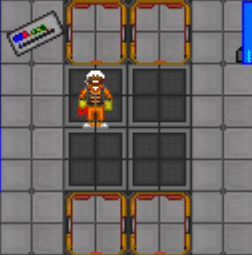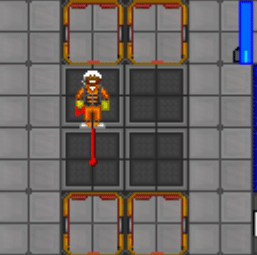Guide to Wiring: Difference between revisions
merged with Cable page. I don't know wiring, so this is assuming the cable page was right. It talks about the knots in the wire as though they don't transfer power |
m updated the page for solars |
||
| Line 5: | Line 5: | ||
* If there is a break in the wire between any APC and the [[SMES]], the APC will slowly lose power until all equipment and lighting in the room stop working. | * If there is a break in the wire between any APC and the [[SMES]], the APC will slowly lose power until all equipment and lighting in the room stop working. | ||
* Likewise, if the cables are missing between the | * Likewise, if the cables are missing between the Solar Panel array and the SMES, they will not charge. | ||
== Tools for wiring == | == Tools for wiring == | ||
Revision as of 23:51, 31 January 2016
How power gets around
Wire is run from the radiation collector array to the SMES units in engineering and finally across the station to an APC in every room.
- If there is a break in the wire between any APC and the SMES, the APC will slowly lose power until all equipment and lighting in the room stop working.
- Likewise, if the cables are missing between the Solar Panel array and the SMES, they will not charge.
Tools for wiring
A lot of people get this wrong, so pay attention!
You will need:
- Wire - Obviously you need some wire to lay down. It can be found in yellow toolboxes or tool storage, as well as just lying around.
- Wire Cutters - Everyone makes mistakes sometimes, and this lets you cut wire you have placed.
- Insulated Gloves - Cutting powered cables with wire cutters will shock or kill you if you do not have these equipped!
- Crowbar - Wiring is often under floor tiles. A crowbar will let you pry up the floor and get to work.
You may want:
- T-Ray Scanner - This will pulse and let you see past floor bits so you don't have to pry up every floorboard to find the break.
Alright! Now that you have all your gear (Hopefully) you can get to replacing damaged wire or running your own!
Laying wire
- Stand beside the spot where you want to place the wire, and face the direction you want it to travel
- While holding the wire, click directly on the wire you want to attach it to!
- If you click the tile the other wire is on instead of the other wire, a little circle will appear. This is where two wires overlap. They aren't connected! No power will flow here. Cut and try again.
- The above setup will allow you to turn a cable 90 degrees.
There you go! That is really all you need to know to wire anything on the station! Watch out for the little circles in the wire and you should be good! Before you try rewiring a whole room or anything like that, grab some wire, head into the chapel, pull up the floor and get practicing!
Demonstration
Clicking the tiles

If you're clicking the square you're standing in, a line of wire will be laid from the center of the tile to the edge of the tile in the direction you're currently facing (which is generally the direction you last moved). If you click another tile, a line of wire will be laid in the center of that tile running toward the tile you were on. This works even diagonally, although since you can't "face" diagonally you can't lay diagonal wires in your own tile using just this method.
Notice the boxiness, but all the wires share power with each other.
Clicking the wire stumps
You can also lay wires by clicking other wires that happen to exist in adjacent tiles. So if you have a wire in a tile NW of you pointed diagonally at your tile, clicking the wire itself will lay a diagonal wire into your tile (click the "nub" in the center of the tile to make it easier). This method is interesting because it produces a "continuous" wire, instead of a sequence of wire segments that crisscross at the center of a square. For instance, if you lay a wire running north to the center of a tile, stand on the tile west of it, and click the wire, it will produce a single curved wire.
This is actually theoretically bad, since wires that don't link up at a center-of-tile junction don't share power with each other. Cutting the wire will also unravel that whole section (one tile) of wire. Since you use just as much wire to make a curved line of wiring between two tiles as two segments that meet at the center, it's almost never worth the bother except for aesthetic reasons. You can lay down some awesome wire art this way, though.
The circular length of wire does not link with the diagonals, and receives no power.
